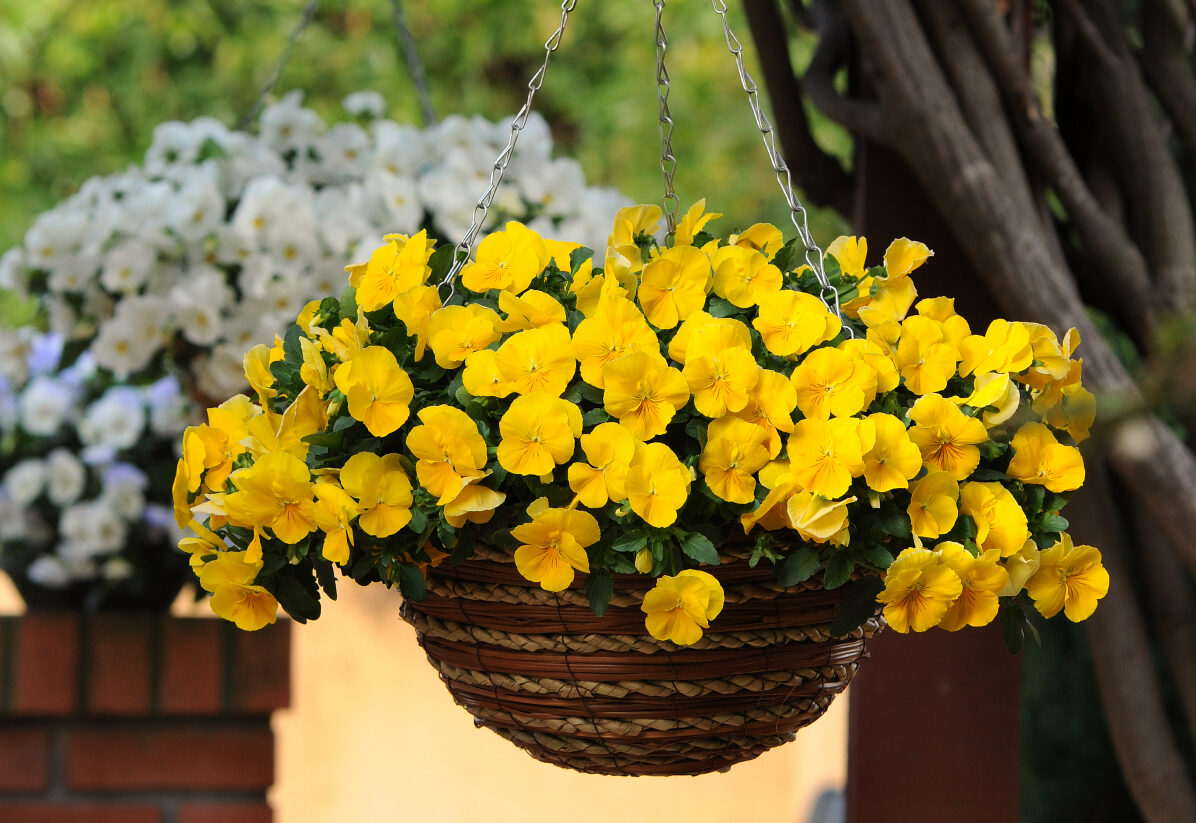Pansy: The smiley face flower

COLUMBIA, Mo. — In a press release, Missouri Extension horticulturist David Trinklein said, “If ever there was a flower that brings a smile to people’s faces, it has to be the pansy.”
This delightful, cool-loving garden flower bears blotched petals that resemble a face smiling back at those who admire it. Midwesterners enjoy pansy’s unique palette of colors and delicate fragrance in spring and fall, Trinklein said.
In Missouri, late March and early September are ideal months to plant them for color that extends for many weeks.
Many confuse pansy with its more petite relative, the viola. Both have flowers with five petals. However, pansy has four petals pointing upward and one pointing downward. In contrast, three of viola’s petals point up and two point down, plus their flowers are usually smaller than those of pansy.
Pansies and violas share a common ancestry. Greeks grew violas for medicinal purposes as early as the fourth century B.C. A watchful gardener noticed that a particular viola flourished in sunny alpine meadows. This strain of viola received the common name of wild pansy.
“One might speculate that the gardener came from France, since the word ‘pansy’ traces back to the French word pensée for ‘thought’ or ‘remembrance,’” Trinklein said.
In the 1800s, the English nobleman Lord Gambier and his gardener, William Thompson, crossed species of the genus Viola. These crosses resulted in plants that produced larger flowers of unusual colors and color combinations.
History credits Thompson with the cross that resulted in the new and now familiar species Viola x wittrockiana. Its flowers burst with huge blocks of color or faces on the lower petals.
By the mid-1800s, Europeans bred pansies and developed hybrids with greater plant vigor. The flowers of these hybrids had no dark blocks or lines. Thus, “clear” pansies got their start.
Popularity of the pansy skyrocketed in North America. A 19th-century seed catalog described pansy as “the most popular of all flowers grown from seed,” with sales exceeding 100,000 packets a year. Over the past several decades, breeders have produced pansies with new colors, including shades of pink, rose or orange, and flowers with unusual bicolor designs. Given pansy’s current popularity, the improvement of this charming little plant is far from over, said Trinklein.
Most gardeners choose to plant pansies sold in bedding plant packs. Choose pest-free, stocky plants with healthy leaves and unopened buds, he said.
Pansies enjoy cool weather and abundant sunshine. Unfortunately, this combination of environmental conditions happens only in spring and fall in the Midwest.
For best results, Midwestern gardeners should choose an exposure of morning sun followed by afternoon shade, said Trinklein. Although pansy grows as an annual in Missouri, fall-planted pansies often survive winters and bloom in late winter or very early spring when temperatures rise.
Pansies have fine and delicate root systems. Plant in porous soil enriched with organic matter to promote good soil aeration and proper water retention. Incorporate 3-4 inches of well-decomposed organic matter as a best management practice. Add pre-plant fertilizer as needed.
Space pansies about 6-10 inches apart and add 1-2 inches of water at the base of the plant. Do not allow soil to dry. Add water-soluble fertilizer according to label directions.
Pansies grow relatively disease- and pest-free. Yellow leaves often indicate root rot, usually caused by overwatering. A white, powdery substance on leaves and stems indicates powdery mildew. Choose a location with good air circulation to prevent this.
Slugs and snails sometimes attack pansies. These pests produce gaping holes in the leaves. Both are nocturnal feeders. Control slugs and snails with poisonous baits.
“The lack of gardening activity during winter can be a bit depressing, especially to avid gardeners,” said Trinklein. Because pansies can be planted very early, they bring an end to the winter doldrums. “Therefore, it might be concluded that pansies, with their cheerful, ‘smiling’ flowers, are as therapeutic for our inner being as they are beautiful to our eyes.”
Miss Clipping Out Stories to Save for Later?
Click the Purchase Story button below to order a print of this story. We will print it for you on matte photo paper to keep forever.

